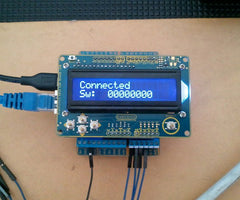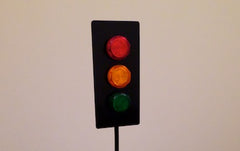To match her article on Arduino audio output, Amanda Ghassaei has also unsurprisingly published another excellent tutorial on audio input with Arduino. Apart from explaining basic sampling, Amanda runs through non-inverting amplifiers, DC offsets, clipping and using interrupts with higher-speed sampling. The entire article is documented very well including some useful DSO imagery.

To learn more, head over to the tutorial page. And for more, we're on twitter and Google+, so follow us for news and product updates as well.
To test audio sampling yourself you can make an easy start with a simple electret microphone board, and our Freetronics MIC: microphone and sound module is perfect.

The MIC: contains an integrated dual signal amplifier converts the sound to separate channels for pulse / frequency measurement, and sound volume (pressure) level. Designed to connect straight to an Arduino compatible microcontroller, Analog to Digital converter, or many other circuits. For more information and to order click here.























